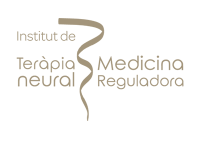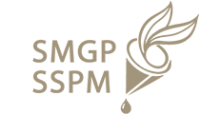How To Stop Excessive Sweating All Over Body
13 Minutes
Sweating on hot, humid days or even while exercising is a healthy and natural occurrence. Sweating is the body’s cooling mechanism. Occasionally, however, the body sweats excessively, as is the case for patients with the medical illness hyperhidrosis (excessive sweating). But how to stop sweaty hands?
In hyperhidrosis, the body’s 2 to 4 million sweat glands are overactive, resulting in excessive perspiration at periods when others would perspire gently (if at all). They perspire heavily regardless of weather or physical exertion. If this is the situation for you or a closed one, you may want to consult a dermatologist because there are effective treatments.
It may be time to consult with a board-certified dermatologist for an examination if you find yourself every day staining your shirts, feeling embarrassed to deliver a handshake due to sweating and dripping palms during winter snow, or coming home to a pool of sweat in your footwear. Occasionally the syndrome is brought on by pharmaceuticals or a medical ailment, but in most cases, there is no actual reason.
The medical staff is aware that excessive sweating can interfere with daily activities and cause embarrassment. The healthcare professionals will do a comprehensive evaluation to identify if there is a cause for excessive sweating and will then tailor a treatment plan to your lifestyle.
Excessive sweating occurs when the sweat glands produce too much fluid. Also known as hyperhidrosis. It is frequently a persistent (chronic) condition.
The entire body can be affected by excessive perspiration, although the soles, palms, armpits, and groin is most commonly affected.
Typically, the cause is unknown. It may be induced by thyroid issues, low blood sugar, diseases of the neurological system, medications, or other issues.
The illness can negatively impact an individual’s life quality and lead to social isolation and sadness. Mental health counseling may be beneficial.
Antiperspirants, medication, surgery, injections, or treatments for another health issue may be used to treat hyperhidrosis.
Maceration of the skin can result in skin loss, discomfort, and skin infection. By managing your hyperhidrosis and maintaining your skin as dry as possible, you can prevent sweating excessively.
To detect hyperhidrosis, your physician will inquire about your health history, including previously diagnosed diseases and medications you are currently using.
Your physician may also do a physical exam and request laboratory testing. These tests might involve a blood and urine sample to detect low blood sugar or thyroid hyperactivity. Both variables may be the root cause of excessive sweating.
Your doctor may also require a sweat test to pinpoint the regions of your body that experience excessive perspiration. For this test, your physician applies a powder to several places on your skin. The powder changes color when perspiring.
Although you are not required to see your primary care physician or a dermatologist for this disease, you should arrange an appointment if you feel chest pains, nausea, dizziness, or night sweats in addition to excessive sweating. This may signal a dangerous medical condition.
Tests to diagnose hyperhidrosis
You may require one or more tests to determine the cause of your excessive sweating. An underlying medical disease might be confirmed or ruled out by blood or urine tests.
Your physician may also prescribe a test to determine the amount of perspiration your body generates. These tests consist of:
Lab tests: Your doctor may order blood, urine, or another lab testing to determine whether your unexplained profuse perspiration is due to another medical problem, like low blood sugar or hyperthyroidism.
Starch-iodine test: The iodine solution is applied to the sweating area, and then starch is sprinkled on top of the iodine solution. Where excessive sweating occurs, the solution will turn dark blue.
Paper test: Your healthcare provider applies special paper to the affected area to absorb perspiration. The provider then weighs the paper to establish how much you perspired.
Unfortunately, some people never consult a doctor for hyperhidrosis treatment due to embarrassment, even though there are numerous treatments aimed at controlling excessive perspiration. Your excessive sweating treatment choice will be determined by the severity of your symptomatology.
Antiperspirant
Antiperspirant deodorants available over-the-counter are an effective first line of protection against excessive sweating.
Based on the intensity of your problem, over-the-counter remedies for sweating may have minimal effect. In this instance, your physician may prescribe a more potent antiperspirant containing aluminum chloride, like Drysol. Remember that antiperspirants for hyperhidrosis should be administered before night and washed off the following morning.
Medication Options
Qbrexza (glycopyrronium) is an anticholinergic fabric licensed for the treatment of profuse underarm sweating in individuals aging 9 years and older. Utilize the same cloth daily for both underarms.
The fabric may cause headaches, skin dryness, sore throats, and burning or stinging sensations. After you’ve used the cloth, it’s vital to clean your hands with water and soap. If the medication comes into contact with the eyes, transient pupil dilation or blurred vision may result.
Another alternative for primary hyperhidrosis is oral glycopyrrolate, which can be taken daily. Unsurprisingly, this drug might produce side effects such as heart palpitations, mouth dryness, and headaches; therefore, you should consult your doctor before taking it.
Other medications taken to treat excessive sweating include nerve-blocking drugs and antidepressants that halt overactive sweat glands.
Botox
You may also consult your physician to determine if Botox (onabotulinumtoxinA) injections are right for you.
Botox is FDA-approved for hyperhidrosis of the underarms, with results lasting between six months and one year. It blocks the secretion of a chemical that triggers the activation of your sweat glands and is occasionally reimbursed by insurance.
Botox may cause undesirable side effects, despite being beneficial. These include injection-site discomfort and temporary muscular weakness.
MiraDry
If over-the-counter and prescription hyperhidrosis drugs are ineffective, your doctor may offer additional procedures, like MiraDry, which can be done in your doctor’s office and offers a lasting fix for underarm sweating. It targets and destroys the sweating and odor glands in your underarms using electromagnetic energy.
Endoscopic Thoracic Sympathectomy (ETS)
Although it is considered a last resort by medical professionals, surgery is another option for treating excessive perspiration when medication alternatives fail.
Endoscopic thoracic sympathectomy (ETS), also known as thoracoscopic sympathectomy, is a type of surgery that involves cutting the nerves in your sympathetic nervous system that cause localized sweating. When effective, the repair is permanent.
If you have hyperhidrosis in your palms or armpits that has not responded to previous first-line therapies, your physician may consider this minimally invasive procedure.
Using general anesthesia, a surgeon will make 2 or 3 incisions in the underarm on the hyperhidrosis-prone side of your body during this surgery. One of your lungs will be briefly compressed to limit airflow during surgery and provide additional space for the procedure.
Using one of the incisions, the team of doctors will implant an endoscope, a type of small camera. This will allow the surgeon to view the inside of the chest on a monitor while doing the procedure. When the surgeon discovers the nerve responsible for your excessive sweat glands, he or she will sever, clip, or cut it. The deflated lung will then be reinflated, and the incisions will be closed with stitches. Depending on the severity of your hyperhidrosis, your surgeon may repeat the treatment on the opposite side of the body.
Typically, the process lasts between one and three hours.
The advantages of this operation include a brief hospital stay and a speedy recovery. Gustatory sweating relates to sweating while eating and is one of the risks. Between five and ten percent of individuals who undergo ETS exhibit gustatory perspiration.
More frequently, you may begin to sweat excessively in parts of your body where you did not previously. This sort of sweating, known as compensatory hyperhidrosis, affects approximately 70% of those treated with this method.
Infrequently, ETS patients can develop Horner’s syndrome due to nerve injury sustained during the operation. This syndrome can cause your pupil to appear smaller, your eyelids to droop, and an absence of sweat on one side of your face. This unintended consequence may diminish over time.
Again, ETS is irreversible. There are no reports of this operation being successfully reversed.
Complementary and Alternative Therapies
Iontophoresis is an alternate treatment that may alleviate hyperhidrosis symptoms. This treatment can be done at home and employs an electrical current to transiently inhibit sweat glands in specific body areas. It is an option for excessive hand and foot sweating.
Your hands or feet will be placed in a small pan of water. The device transmits a moderate electrical current through the water to disturb your sweat glands when your feet or hands are submerged in water.
This treatment is efficient but time-consuming. You may require 2 to 3 treatments per week, with each session lasting up to forty minutes. Results are transient.
Herbal supplements, such as chamomile, sage, and St. John’s wort, are natural remedies for hyperhidrosis. Consult your physician before taking herbal supplements, particularly if you are already taking prescription medications.
Unfortunately, there is little evidence to prove the efficacy of this therapy.
Acupuncture may potentially produce excellent benefits for hyperhidrosis. In a previous study, three individuals with primary hyperhidrosis had 20 to 25 acupuncture treatments over a few months. All individuals noted a reduction in perspiration, and no adverse effects were recorded.
Hyperhidrosis can involve numerous body areas, such as the face, foot, groin, and armpits. Sweaty palms are the most prevalent form of hyperhidrosis. Hyperhidrosis can affect single or multiple body parts, each of which can be addressed with hyperhidrosis surgery.
Axillary Hyperperspiration (Underarms)
Around 1 percent of the population is affected with hyperhidrosis of the underarms, which is characterized by excessive sweat in the armpits. If patients also have excessive sweating in another area of the body, they may be good candidates for thoracoscopic sympathectomy operation to address their sweaty underarms.
Palmar Hyperhidrosis (Sweaty Palms)
The most prevalent type of hyperhidrosis involves excessive palm sweating. It is marked by excessive palm sweating, to the extent of dripping. If you are suffering from palmer hyperhidrosis, you might have thought “How to stop sweaty hands?” The minimally invasive surgery known as thoracoscopic sympathectomy is 90 percent successful and safe for curing sweating hands.
Facial Hyperhidrosis
Sweating profusely on the head is exceedingly uncomfortable and can cause the cheeks to flush. In severe cases, thoracoscopic sympathectomy surgery can be used to address face hyperhidrosis in addition to non-surgical treatments such as medicine and Botox. Surgery for facial hyperhidrosis may result in compensation sweating, which is perspiring in another area of the body, most frequently the lower extremities and abdomen. Additional drugs may be recommended to assist in the treatment of compensatory perspiration.
Plantar Hyperhidrosis (Feet)
Plantar hyperhidrosis is characterized by excessive foot perspiration and can result in persistent fungal infections and foot odor. Hyper hydrosis cure for feet includes topical medicines and thoracoscopic sympathectomy procedures.
Groin Hyperhidrosis
For some patients, hyperhidrosis might affect the groin region. It can be exceedingly painful and possibly lead to fungal infections, as certain parts of the body are typically more humid compared to others and require longer to dry out. The groin hyperhidrosis can be treated by a minimally invasive thoracoscopic sympathectomy procedure.
Hyperhidrosis can cause psychological and emotional distress. If you have experienced the embarrassment of profuse perspiration, you are familiar with these repercussions. Seeing a doctor is beneficial. But if you need an urgent answer, several tactics might assist you in dealing with and reducing your worry.
Maintain a Journal to Discover Sweat Triggers
Some individuals have found keeping a sweat journal to be beneficial. This might assist you to discover conditions that cause you to perspire excessively. Record in your journal the days you have excessive perspiration, along with your level of exercise, the meals you consumed, and your emotional state.
You may notice that eating particular meals, such as spicy foods, or being unhappy or anxious causes you to sweat excessively.
Reduce Hyperhidrosis-Related Stress with Mindfulness Practices
If you are feeling anxious, you should engage in relaxation and mindfulness practices such as yoga or meditation. These methods may also minimize your stress and excessive perspiration. Additionally, establish limits and avoid overspending yourself. You may even reduce your caffeine intake.
Certain Tips Can Reduce Hyperhidrosis-Related Anxiety
The following suggestions can help make hyperhidrosis less humiliating:
- Daily bathing will minimize body odor.
- Use baby powder to reduce the moisture content of shoes.
- Use sandals to keep your heels dry and cool.
- Choose attire that is appropriate for your level of exercise. While exercising, use moisture-wicking textiles and colorful fabrics to conceal perspiration stains.
- At night, apply deodorant and antiperspirant to your skin.
While experimenting with antiperspirants or other treatments recommended by your doctor, you can also try some home remedies to minimize perspiration.
Do not wear bulky, sweat-trapping clothing. Wear instead lightweight, breathable fabrics like silk and cotton. When you know you will be working or going outdoors in the heat, bring an additional shirt.
Utilize underarm liner and shoe insoles to soak sweat to prevent clothing damage and odor.
At your preferred Mexican restaurant, do not order a dual jalapeno burrito with a margarita. Alcohol, spicy foods, and hot beverages such as coffee and tea can all induce perspiration.
The following tips may assist you in managing body odor and excessive sweating:
Apply antiperspirant. Antiperspirants available without a prescription comprise aluminum-based chemicals that momentarily obstruct the sweat pore. This decreases the amount of sweat reaching the skin. This sort of product may aid in the treatment of mild hyperhidrosis.
Use astringents: Apply tannic acid-containing over-the-counter medicines (Zilactin) to the area affected.
Daily Bathe: Everyday hygiene requires a bath or shower. Regular bathing helps maintain a healthy level of skin bacteria. Particularly dry yourself between the toes and beneath the arms.
Choose footwear and socks constructed from natural materials. By enabling your feet to breathe, shoes made from natural materials like leather can help avoid sweaty feet. Active individuals should wear moisture-wicking athletic socks.
Replace your socks frequently. Once or twice every day, change your socks and dry your feet thoroughly after each change. Consider trying pantyhose with cotton bottoms. Utilize over-the-counter feet powders to absorb perspiration.
Float your feet. Go barefoot whenever possible, or at least remove your shoes occasionally.
Choose appropriate attire for your activities. Cotton, wool, and silk are examples of natural textiles that enable your skin to breathe. You may choose textiles engineered to wick sweat away from the skin during activity.
Try relaxing techniques. Consider approaches such as yoga, meditation, and biofeedback for relaxation. These can facilitate you in learning to manage the tension that causes you to sweat.
Adaptation and support. Hyperhidrosis can result in distress and shame. Damp hands or feet and wet spots on your clothing may make it difficult for you to work or participate in leisure activities. You may experience anxiety and become reclusive or self-conscious due to your symptoms. You may become annoyed or upset by the responses of others.
In addition to speaking with your physician, you may wish to speak with a medical social worker or counselor. Or, perhaps you may find it useful to speak with other hyperhidrosis sufferers.
FAQs
Can Hyperhidrosis Be Genetically Transmitted?
The familial nature of focal hyperhidrosis indicates a genetic link. It is typical for numerous family members to experience hyperhidrosis, although you may be unaware. This is because many individuals with hyperhidrosis do not feel comfortable discussing their symptoms.
What Is The Treatment Prospect For Individuals With Hyperhidrosis?
While there is no permanent hyper hydrosis cure, there are solutions for managing its symptoms. And modern treatments are diverse and changing.
Although hyperhidrosis is not life-threatening, it can severely impair your quality of life. Relationships, social life, and jobs might be negatively impacted by excessive perspiration anxiety. Speaking to a mental health professional may provide beneficial assistance. A support group for hyperhidrosis might link you with individuals who have experienced similar difficulties. The support might help you embrace your unique qualities.
HOW SENSES CAN HELP WITH Aesthetics
Senses is a leading provider of luxury addiction and mental health treatment for affluent individuals and their families, offering a blend of innovative science and holistic methods with unparalleled individualised care.
A UNIQUE METHOD
successful and proven integrative holistic conceptOur program consists of treating only one client at a time individually designed to help you with all the problematic aspects of your life. All individual treatment sessions will be held at your private residence.
more infoYour program is designed based on your personal needs. The team will exchange daily information and adjust the schedule as we go. Our therapists will work with you treating integrative not just the symptoms and goes beyong your stay to ensure lasting success.
more infoOur biochemical imbalance can be affected by diet and stressful life events, but it often goes back to genetics and epigenetics. We do specific biochemical laboratory testing to determine an individual’s biochemical imbalance. Combining the results of the lab tests with anamnestic information and clinical tests, we prescribe an individualized and compounded vitamin, mineral, nutrient protocol to help recover from various disease states.
more infoOur experts combine the best from psychological treatment, holistic medicine to support you individually and providing complementary therapies all coordinated from one source working complementing each other integrative.
more infoUsing latest cutting-edge technology-based therapies such as Neurofeedback, tDCS, and SSP, we can track the biological patterns of your body, giving us valuable insight into your health and well-being as well support your brain and body performance and recovery with neuromodulation.
more infoOur chef and nutrition specialist will design your personalized diet plan supporting your body & mind recovery as well as helping with weight management. Nutrition workshops and mindful eating sessions will help you to maintain a healthy lifestyle.
more infoAesthetics TREATMENT LASTING APPROACH
0 Before
Send Request
0 Before
Define Treatment Goals
1 week
Assessments
1-4 week
Integrative Holistic Therapies
5-12 week
Aftercare
12+ week
Refresher Visit
Aesthetics Insights
latest news & research on AestheticsHow Long Until You Can Work out After Lip Fillers
Lip fillers are a wonderful method for achieving fuller, plumper lips. As with any treatment, the correct post lip filler care plan is essential to ensuring a positive experience and a speedy recovery
read moreHow To Prevent Bruising After Botox
However, Botox administration does not always result in bruising; in fact, the vast majority of individuals do not develop botox injection bruises after treatment.
read morePost Botox Care
If you would like to learn more about the things you should and shouldn't do after getting botox, continue reading as we're going to discuss what botox i
read moreAccreditations



























































